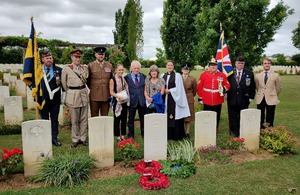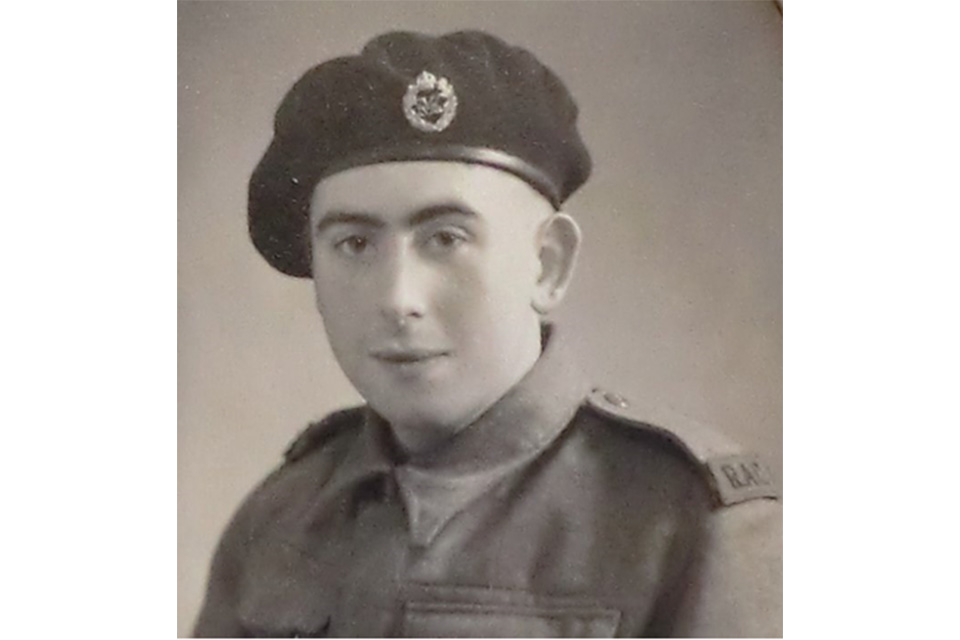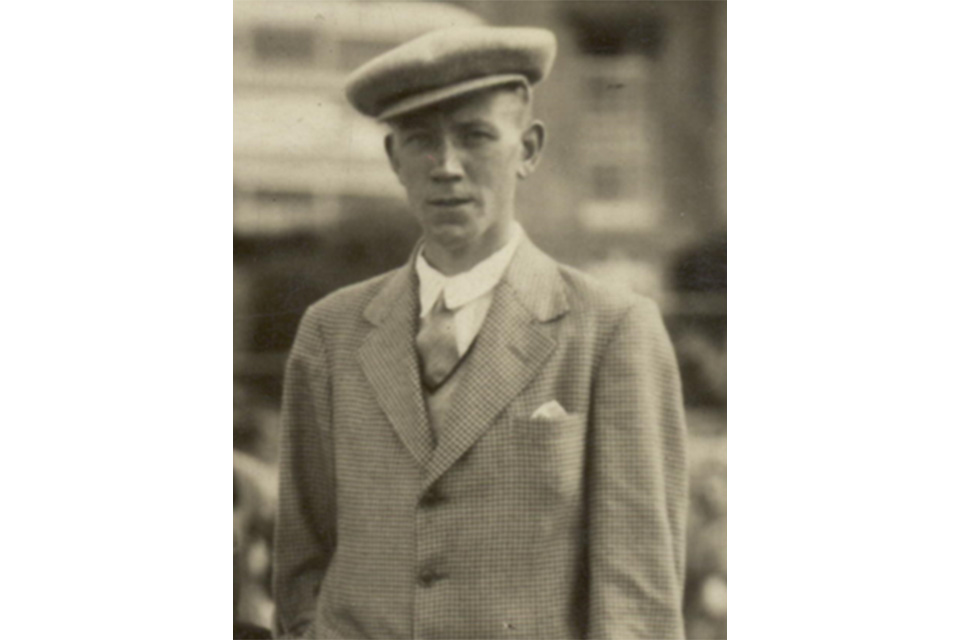Graves of three soldiers killed in Normandy identified
Three soldiers who made the ultimate sacrifice in 1944 now have named graves at Banneville-la-Campagne War Cemetery in Normandy.

David Little, the nephew of Trooper Little stands at the graveside of his uncle with his wife, daughter and the military party. MOD Crown Copyright.
The family of a soldier killed during the Battle of Normandy has visited the newly named grave of their loved one, who has now been identified after an 80-year search for closure.
Rededication services took place on 26 June at CWGC Banneville-la-Campagne War Cemetery in Normandy for Trooper Francis Dominic Kelly and Trooper Victor Terrence Little, both of 1st Northamptonshire Yeomanry, and Private John Aneurin Protheroe of 2nd Battalion The Monmouthshire Regiment, all of whom died in August 1944. 
The identifications were made following research by Ministry of Defence‚Äôs Joint Casualty and Compassionate Centre (JCCC), known as the ‚ÄėMOD‚Äôs War Detectives‚Äô, the National Army Museum and Commonwealth War Graves Commission (CWGC).
Trooper Little’s nephew, David Little, attended the moving ceremonies to pay their respects. He said: 
We were so wonderfully surprised when JCCC contacted us regarding our Uncle Vic as there has always been a sadness that Victor’s remains had never been found. We’ll always be grateful for the work of the JCCC War Detectives in enabling us to attend the rededication service of dear Victor on behalf of his parents and siblings.

Headshot of Tpr Francis Dominic Kelly (courtesy of the Kelly family).
Robert Gore, the grandson of Pte Protheroe could sadly not attend the service. He said: 
My Grandfather was posted missing believed killed in 1944 when my mother was 13 and my aunt 3 years old. My mother has kept his memory very much alive with her stories to me and my 4 siblings.
When I was about 10 I read a novel where a soldier goes missing but eventually comes home alive. As a 10 year-old, that was always my fantastic hope that my grandfather would reappear. The identification of his grave at Banneville is the culmination of that dream even though he never came back alive and my mother is now also dead. I, my siblings and cousins are all grateful for the efforts of the MoD in this regard and we offer our heartfelt thanks.
The identifications came after a researcher submitted cases to the CWGC suggesting possible locations for their graves. Following further investigation by CWGC, the National Army Museum and the JCCC, the identities of the 3 soldiers were confirmed. 

Pte John Aneurin Protheroe (courtesy of the Protheroe family).
The services were organised by the Ministry of Defence‚Äôs JCCC, known as the ‚ÄėWar Detectives‚Äô, with representatives from The Royal Corps of Signals, The Royal Regiment of Artillery and The Royal Welsh in attendance.¬†¬†¬†
Rosie Barron, JCCC Caseworker, said:  
It has been a pleasure to work with the military party to organise these services and to have had the families of Trooper Little and Private Protheroe present. It is important that the memory of these men is honoured, and a strong reminder that the fighting in Normandy did not end on D-Day, but that the Battle of Normandy lasted until the end of August 1944 and was hard won by the Allies.
All 3 men had previously been commemorated on the Bayeux Memorial to the missing. The CWGC has now replaced their headstones with named markers and will care for them in perpetuity. 
Fergus Read, Commemorations Case Officer at the CWGC, said: 
It is an honour to have been involved in the research that led to the formal identification of these men. It is a privilege to play a part in establishing where these casualties of the battles in Normandy are buried. This now allows the Commission to care for their named graves, in perpetuity.